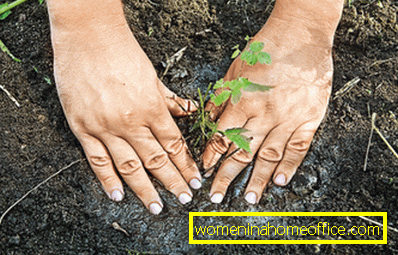Astilba
Astilba is a beautiful garden flower that many people love because of its unpretentiousness, frost resistance and flowering. Astilbe flowers are small, collected in inflorescences on high peduncles. The flowers of the plant appear at the beginning of summer and come in different shades - red, white and pink.

Astilbe is common in East Asia and North America. Here it is found in 30 different species. Ten of these species are grown in gardens and orchards. Astilba is divided into several varieties:
- Dwarf - height about 30 cm.
- Low-growing - height 30 - 60 cm.
- Mid-height - height 60 - 90 cm.
- Tall - height 90-150 cm.

Astilba: landing
For planting astilbe choose humus-rich, fertile and moisture-intensive soil.. The best place to land is penumbra.Planting is carried out not less than 1.5 m from other plants.. For planting it is recommended to make holes at a distance of about 30 - 40 cm from each other. After planting the seedlings, it is better to treat the ground around the holes with a layer of mulch (3 cm layer).
If you planted astilba in an open, sunny place, you will have to water it abundantly and regularly mulch the soil. This will keep moisture and protect the roots from overheating.
Astilba: care

- Astilbe requires careful care only at the beginning of growth.. At this time, the seedlings are small, and the root system is not yet developed. With proper care, astilba roots grow widely and prevent other plants from growing, so astilba does not like the neighborhood.
- Permanent care of astilba is necessary for a plant if it is planted in a sunny place and on light soil.. In this case, the stilt must necessarily often water and mulch the soil. If you planted a plant on wet soil or in a wetland, then Astilba is practically unnecessary. The soil itself will do its job!
- Astilba care involves autumn cutting of plants at the soil level, as well as their mulching for the winter. Mulching will prevent the plant from dying even in the most severe frosts.Young bushes of astilba can be additionally protected from the cold by fir-tree branches, peat or other materials., which will help protect the plant from frost.

Astilba: cultivation
- At one place astilba can not be grown more than 5 years. Rejuvenation of the plant is recommended to be carried out regularly, since the old rhizomes are difficult to divide. Astilbe division is best done in spring or early autumn, planting young plants in loose soil.
- Astilba easily tolerates separation., so next year you can get a beautiful flowering plant in your garden.

- The most convenient way to grow astilba is division of rhizomes. Astilbe's rhizome is cut into several parts that have at least one faded stem at the base.
- For reproduction, you can take part of the rhizome without faded stems. On the rhizome there are dormant buds, which in the spring will give young shoots. But when grown in such a way, flowers are unlikely to bloom next year, so it is better to take rhizomes with faded stem.
- If you decide to grow astilba from seed, they need to be sown indoors in March, scattering seeds on the surface of moist soil. The surface of the soil cover film. After 3 weeks, small shoots will appear in place of the seeds.Do not forget to regularly moisten the soil., so that the shoots do not dry out. When astilba grows up (usually it happens at the end of spring), it can be landed on a permanent "place of residence" in open ground.

- After planting, do not forget to regularly feed and water it. The first flowering of astilba will occur only in 2-3 years..
Now you know, how to grow astilba. A beautiful plant will be planted in your garden that the neighbors will admire, and you yourself cannot take your eyes off it.